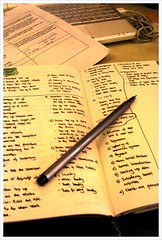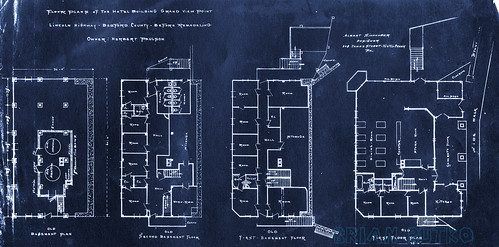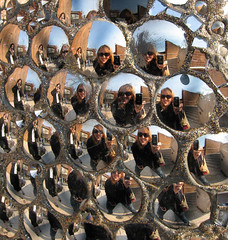Better Dancer: How to Learn Choreography, Part 3
This is the third in the three part series on how to improve your ability to learn choreography. The first part covered tips on preparation, the second part covered tips for learning in the studio, and this last part will cover tips on how to better recall and refinement of choreography.
Getting It Right
Once you’ve gone through the process of learning a choreography the first time you’re not done. That’s only the beginning.
To be able to better recall choreography and then refine your performance of choreography requires diligence, focus and the right tools for the job.
 Have Notes
Have Notes
Having notes, whether in a digital format (video, photo, etc.), personal notation or scary Laban notation, gives you a reference to help guide you through the choreography without having to immediately internalize the whole choreography.
They function as the blueprint upon which you can work through each section individually; they also serve to remind you of particular comments or feedback you received during instruction. Was this section expressive or stoic, intense or reserved and so on.
Learn to Mark
Learning to mark out a choreography is an excellent way to cement audio, visual and spatial cues in your mind.
What is marking?
Marking is also called walking the choreography. The idea is to perform the dance at a fraction of their normal intensity so as to reinforce their placement and relationship of movements and steps to one another.
Marking is a way of alluding to the movement without actually performing it; it’s the physical outlining of the choreography without going into depth.
By marking you can focus on sequencing movements instead of performing the movements.
Use a Video Camera
When practicing the choreography use a video camera to film yourself everytime you run it.
Instead of focusing on a mirror to check your lines while you practice, allow the camera to capture the lines for you and then watch the footage and note places where improvement is needed.
Running specific sections with various emotions or expressiveness allows you to find the appropriate character for your movement in a particular place in the choreography when reviewed on film.
The use of a video camera allows you to take note of where you may be ahead or behind the music, missing a step, creating an unanticipated shape, or moving in an unintended direction.
Filming yourself is a great tool for iterative refinement of a choreography.
Run It In Your Mind
Perhaps one of the best pieces of advice I received when learning a choreography to be performed was to run the whole choreography in my head; three times over back to back.
 Visualize yourself going through the routine movement by movement in conjunction with the music (don’t actually listen to the music – it should be part of the visualization).
Visualize yourself going through the routine movement by movement in conjunction with the music (don’t actually listen to the music – it should be part of the visualization).
If you make a mistake or forget something start from the beginning. The goal is to properly perform the choreography non-stop three times through without making a mistake or forgetting a section.
The benefit of this visualization process is that you don’t have to be in the studio to perform it physically. It can be performed sitting on the bus, before you go to sleep, or wherever you have a moment to sit and focus your mind.
You’ll find that visualization combined with actual practice will improve your retention and performance more than with physical practice alone.
Have An Audience
It is exceptionally helpful to have an audience of peers, instructors or mentors to help refine various aspects of a choreography or particular movements.
The outsiders eye is invaluable in approaching the work from a different perspective and notice elements which are out of place or off. Having an open and critical discussion of the performance casts the piece in a new light for the performer, giving the performer a new view on their own movements.


 Do It, Don’t Watch Yourself Do It
Do It, Don’t Watch Yourself Do It